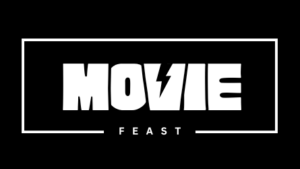The Hurricane Katrina: Race Against Time review reveals why this 2025 HBO documentary delivers profound historical insight and emotional authenticity. John Maggio’s masterful direction transforms familiar disaster territory into something genuinely illuminating and deeply human.
What happens when you combine government failure with human resilience in the face of America’s most devastating natural disaster? You get documentary perfection. Hurricane Katrina: Race Against Time (2025), directed by John Maggio, stands as one of the most comprehensive and emotionally compelling disaster documentaries in recent television history. This powerful series follows the catastrophic events of Hurricane Katrina through the eyes of survivors, first responders, and government officials who lived through those harrowing days. While the documentary operates on familiar historical territory, it succeeds because it never distances viewers from its subjects—every moment of tragedy and heroism is captured with complete journalistic integrity and emotional authenticity.
Synopsis
Hurricane Katrina: Race Against Time chronicles the devastating 2005 hurricane that exposed systemic failures at every level of government while revealing extraordinary stories of human survival and community resilience. The documentary follows multiple perspectives from the storm’s approach through the chaotic aftermath, examining how a natural disaster became a man-made catastrophe.
With never-before-seen footage and candid interviews with key decision-makers, the series documents the breakdown of emergency response systems and the abandonment of New Orleans’ most vulnerable residents. The film follows survivors’ desperate attempts to find safety while government officials struggled with decisions that would determine who lived and who died.
Plot & Themes
Hurricane Katrina: Race Against Time operates on a devastatingly complex premise: natural disasters reveal the true character of both institutions and individuals when everything familiar collapses. The hurricane setting serves as both historical documentation and urgent examination of how systemic inequalities determine who receives help during emergencies.
The documentary’s genius lies in its careful balance between personal testimony and institutional analysis. When survivors describe being trapped in their homes while government officials debate response protocols, the film never treats their suffering as secondary to political examination. These moments work because Maggio understands that true understanding comes from connecting individual experiences with larger systemic failures.
Thematically, the series explores how race and class shape disaster response, how bureaucratic dysfunction can become deadly, and how ordinary people find extraordinary courage when institutions fail them. The survivors’ journeys aren’t just about weathering a storm—they’re about confronting the reality that their government was unprepared to protect them.
Cinematography & Visuals
The cinematography captures the overwhelming scale of destruction with visual techniques that serve both the historical record and emotional storytelling perfectly. The visual approach combines archival footage with contemporary interviews, using careful editing and restrained camera work to create mounting horror without exploiting victims’ suffering.
The documentary excels in building understanding through visual evidence. The sequences showing flooding progression and rescue operations demonstrate excellent integration of news footage, home videos, and satellite imagery. The camera work during interview segments captures both the lasting trauma and remarkable resilience of those who lived through the disaster.
Archival material rewards careful viewing. During evacuation and rescue sequences, attentive viewers will notice how the documentary reveals previously unknown details about decision-making processes and communication failures that contributed to the catastrophe.
Acting & Characters
The interview subjects deliver powerhouse performances simply by telling their truth, anchoring the documentary with authentic testimony that ranges from heartbreaking to infuriating. Former officials like Ray Nagin and Michael Brown provide insight into their decision-making processes while survivors share experiences that reveal the human cost of institutional failure.
Kathleen Blanco and other government officials bring complexity to their roles, avoiding simple villain narratives while acknowledging their mistakes and limitations during the crisis.
The survivor testimonies create the documentary’s emotional core, with individuals sharing experiences that feel both personal and representative of larger community trauma.
Emergency responders and volunteers round out the narrative with accounts that demonstrate both the failures and successes of disaster response efforts.
Direction & Screenplay
John Maggio’s direction maintains perfect balance throughout the documentary’s runtime. Coming from his experience with historical documentaries, Maggio understood that disaster films require careful pacing that honors victims while examining systemic failures. Every revelation and personal account is given space to resonate without overwhelming viewers.
The narrative structure layers information at multiple levels:
Personal survivor stories that create emotional connection Government decision-making that reveals institutional failures Historical context that explains how inequality shaped the disaster’s impact Contemporary relevance that connects past failures to present challenges The documentary’s organization follows chronological events while building toward deeper understanding of how disasters expose societal fault lines. This creates familiarity that makes moments of revelation about government failure land with greater impact.
Sound & Music
The film’s score perfectly balances respect for victims with the urgency of historical documentation to create an audio landscape that mirrors the chaos and heartbreak of those days. The music enhances the natural drama without overwhelming the authentic voices of those who experienced the disaster.
Sound design plays a crucial role in immersing viewers in the disaster experience. The way wind and water sounds build tension, how emergency radio communications reveal confusion and desperation, and the contrast between official statements and ground reality creates an immersive experience that places audiences directly into the unfolding catastrophe.
The use of silence deserves particular recognition. Key moments of loss and realization are allowed to breathe without musical manipulation, trusting viewers to connect with the gravity of what they’re witnessing through testimony alone.
Conclusion & Verdict
Hurricane Katrina: Race Against Time succeeds because it treats its historical subject with journalistic rigor and emotional sensitivity that serves both documentation and social justice without sacrificing either. Every element—from interview selection to archival footage to musical score—works in service of both historical understanding and contemporary relevance.
Strengths:
Comprehensive examination that balances multiple perspectives without false equivalencies Powerful survivor testimony that creates lasting emotional impact Excellent use of archival material that reveals previously unknown details Thoughtful exploration of systemic inequality through specific historical events
Minor Weaknesses:
Some government official interviews may feel insufficient for viewers seeking accountability Occasional pacing issues when institutional analysis slows personal narrative momentum
This documentary remains essential viewing for anyone interested in American history and disaster preparedness. Hurricane Katrina: Race Against Time works for viewers who appreciated When the Levees Broke, The Act of Killing, or 13th.
Rating: 8.5/10
Director: John Maggio
TV Rating: TV-14 (for disturbing disaster footage, language, and intense thematic material)
Starring: Ray Nagin, Kathleen Blanco, Michael Brown, numerous survivors and first responders
For more documentary reviews, check out our analysis of other HBO historical productions. You can also explore the series’ impact and additional resources at educational databases.


